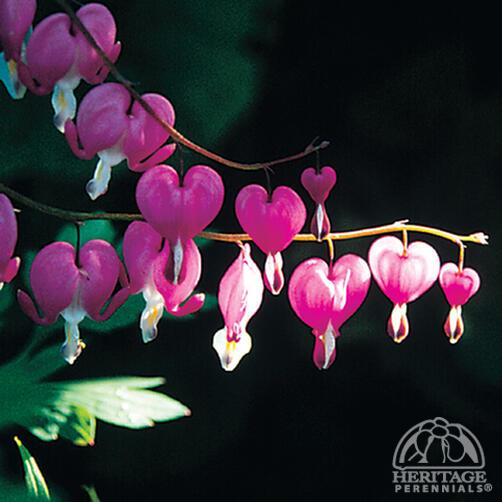Dicentra spectabilis
Plant number: 1.187.050One of the most popular of old-fashioned garden plants, Bleedinghearts burst into flower in late spring. Plants form a bushy, upright mound of light green foliage, with a somewhat ferny appearance. Dangling bright-pink locket flowers are held on arching stems, and these are excellent for cutting. Performs best in a rich, moist soil with partial shade, or at least protection from hot afternoon sun. After flowering, the plants should be sheared back to 6 inches tall, to rejuvenate the foliage. Even still, these often go completely dormant by midsummer, to return again the following spring.As an interesting sidenote, botanists have decided to change the name of the plant to Lamprocapnos spectabilis. Here at Heritage Perennials, we'll be waiting for a while to see if the new name sticks before we start calling it that. Further details for |
Dicentra spectabilis
Plant number: 1.187.050One of the most popular of old-fashioned garden plants, Bleedinghearts burst into flower in late spring. Plants form a bushy, upright mound of light green foliage, with a somewhat ferny appearance. Dangling bright-pink locket flowers are held on arching stems, and these are excellent for cutting. Performs best in a rich, moist soil with partial shade, or at least protection from hot afternoon sun. After flowering, the plants should be sheared back to 6 inches tall, to rejuvenate the foliage. Even still, these often go completely dormant by midsummer, to return again the following spring.As an interesting sidenote, botanists have decided to change the name of the plant to Lamprocapnos spectabilis. Here at Heritage Perennials, we'll be waiting for a while to see if the new name sticks before we start calling it that. Further details for |






